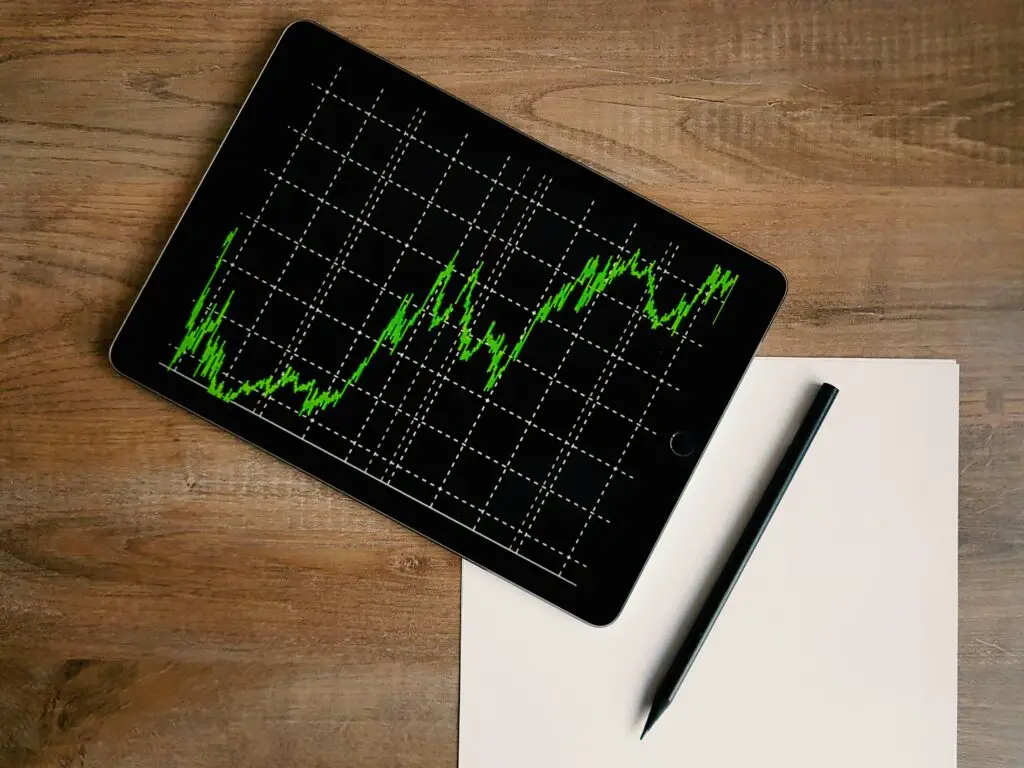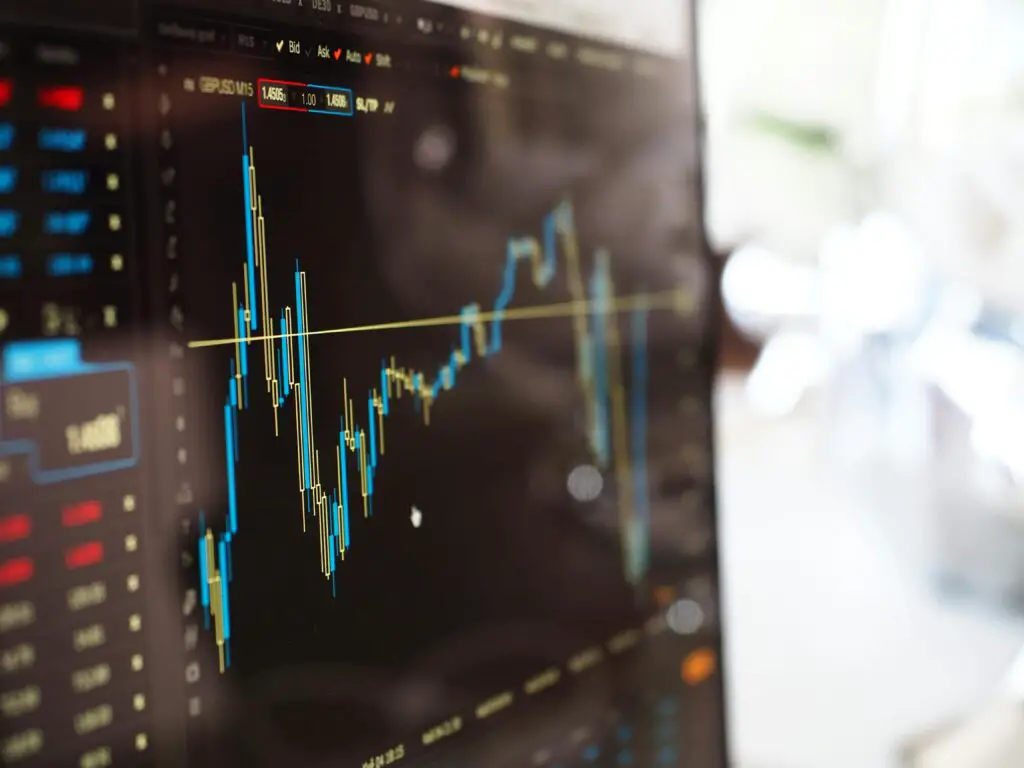The market is open four days a week, 24 hours a day. It is the biggest trading market in the world. Chart patterns are one way that traders use to help them decide what to do in this market. Chart patterns are the forms that happen when the prices of currencies move around on a chart. Traders can use these patterns to guess how prices will move and make intelligent buying decisions. This piece will look at some common chart patterns used in forex trading, show you how to spot them, and discuss what they might mean about how prices will move.

What Are Patterns on a Chart?
Chart patterns are shapes that show up on price charts. The way the prices of currencies change over time makes these patterns. Traders can guess how prices will move by looking at these trends. Charts have two main types of patterns: patterns that go past and patterns that go forward. Patterns that look like shifts mean that the current trend will change, while patterns that look like continue mean that the current trend will keep going.
Patterns of Reversal
Patterns of reversal show that the current trend is likely to change directions. These are some common patterns of reversal:
The top and shoulders
The head and shoulders are among the best-known reversal designs. The three-peak shape consists of a higher. It comes in two styles: the standard head and neck and the Inverse Head and Shoulders.
Standard Head and Shoulders: This pattern shows that a trend going up will change direction and go down. Price hits a peak (left shoulder), then a higher peak (head), and finally a lower peak (right shoulder). This makes the pattern. The low points of the two dips are linked to create a neckline. If the price falls below the neckline, the trend changes from going up to down.
Inverse Head and Shoulders: This pattern shows that a downward trend will change direction and increase. When the price hits a low (left shoulder), then a lower low (head), and finally a higher low (right shoulder), this shape forms. To draw the neckline, connect the two tops’ high points. The price will change direction when it breaks above the collar.
Bottoms and tops that are twice as long
You can also see inverse patterns like the Double Tops and Double Bottoms.

Double Top: This pattern shows that a rise can turn into a downtrend. It happens when the price goes up, back down, and up again before going down again. A resistance level is the place where the price hits two high points. If the price falls below the low point between the two peaks, the direction changes from going up to going down.
Double Bottom: This pattern points to a change from a downtrend to an ascent. It happens when the price goes down to a low point, then up, and then hits another low point before going up again. A support level is the place where the price hits the bottom twice. If the price goes above the high point between the two lows, the direction changes from going down to going up.
Three tops and three bottoms of three
Like Double Tops and Double Bottoms, these patterns show that things may change.
Triple Top: This design points to a change from an upward to a downward trend. This pattern will appear if the price hits three similar peaks before going down; when the price falls below the low point between the peaks, the direction changes from going up to going down.
Triple Bottom: This design shows that a trend is changing from downward to upward. The price hits three lows close to each other before going up. When the price goes above the high point between the lows, the direction changes from going down to going up.
Patterns of Staying
These are some popular ways to continue:

Triangles
There are three kinds of triangles: symmetrical, ascending, and falling. They are all popular continuation patterns.
A perfect triangle is formed when the price hits lower highs and higher lows that come together to create a point. It means there will be a time of peace before the price moves back in the direction of the previous trend. If the price goes up before the triangle, it is likely to keep going up after it breaks out of the triangle. On the other hand, if the price was declining, in decline it is expected to keep going down after breaking out.
Lower Triangle: This shape appears when the price hits an upward resistance level and then makes higher lows. This means buyers are getting stronger and are likely to raise the price. If the price goes above the resistance level, the rise will continue.
This pattern is called a descending triangle when the price hits an upward support level and makes lower highs. That means buyers are getting stronger and will likely drive down the cost. If the price falls below the support line, the downtrend will continue.
Stars and Stripes
After a sharp price change, this pattern, called the mast, appeared. It comprises a small rectangular shape that moves away from the trend. If the trend went up, the flag would slope down; if it were going down, it would slope up. It will continue when the price breaks out of the flag toward the previous trend.

Pennant: This design also appears after a sharp price change. It is made up of a small symmetrical triangle. Like the flag, the pennant shows a short period of calm before the price moves back in the direction of the previous trend. If the price breaks out of the pennant, the trend will continue.
Traced shapes
The Rectangle pattern forms a continuation pattern when the price stays within a horizontal range of support and resistance levels. The pattern shows there will be a calm time before the price moves back in the direction of the previous trend. , When the price breaks out of the square, trend.
Figure out how to use chart patterns when trading forex.
For forex traders, understanding and spot chart trends can be beneficial. To make good use of chart trends in trading, follow these steps:
Find the pattern.
The first thing you need to do is find the pattern on the price chart. For this to work, you must carefully watch how the prices move and know what makes each trend unique. Traders should watch for peaks, troughs, and areas of consolidation that fit the trends we discussed above.
Check the Pattern
It’s essential to prove a possible pattern once it has been found. It would help if you waited for the price to break out of the pattern the way you think it will. For instance, traders should wait for the price to break below the collar in a Head and Shoulders pattern before they are sure the trend has changed.
Find the price you want to sell at.
Traders can set a goal price once they are sure of the pattern. Right now, this is where the price is likely to go after it breaks out. The goal price is found in several different ways depending on the pattern. In the case of a head-and-shoulders pattern, the goal price is found by guessing how far down the pattern goes from the neckline based on the distance from the head to the neckline.
Deal with risk

Managing risk is very important when dealing with forex. Traders should set stop-loss orders to control how much they could lose if the price goes against what they thought it would do. The stop loss level should be set so the pattern is no longer valid. For instance, e, the stop loss can be put above the right shoulder in a Head and Shoulders pattern.
Watch the Trade
After the deal is made, monitoring the prices and making changes as needed is vital. Traders should be ready to exit the trade if the price hits the goal level or the pattern fails to stay up.
What Not to Do: Common Mistakes
For traders, chart trends can be helpful, but they should not make these stupid mistakes:
Patterns of Forcing
Traders often make the mistake of trying to see trends that are not there. It is essential to be fair and only trade patterns that are easy to understand.
Not Considering Other Factors
It would help if you did not utilize chart designs alone. When making trading choices, you must consider market conditions, economic news, and other technical indicators.
Forcing trades
Another common mistake is trading too much. Traders ought not to trade every trend they see. Instead, they should be patient and wait for setups that have a high chance of happening.
Not Managing Risk Well
It is a big mistake not to handle risk. Traders should never risk too much on a single trade and always use stop-loss orders.
In conclusion
Forex traders can learn a lot from chart trends because they show them how prices might move. If they understand and can spot these trends, using chart patterns and other ways of analyzing data and properly handling risks is essential. Traders can use chart patterns to find their way around the forex market as long as they stay focused and avoid common mistakes.

